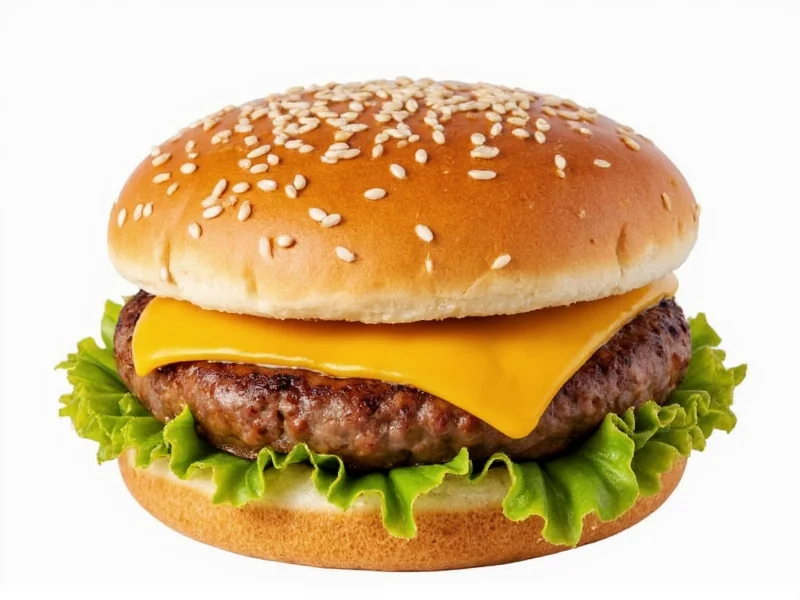Understanding the nutritional profile of fast food breakfast options is essential for making informed dietary choices. The Sausage McMuffin remains one of McDonald's most popular morning menu items, but its calorie content and nutritional composition warrant closer examination for health-conscious consumers.
Nutritional Breakdown of a Sausage McMuffin
While the 400-calorie count provides a starting point, examining the complete nutritional profile reveals more about what you're consuming. The calorie distribution comes primarily from three macronutrients, each contributing differently to the overall nutritional value.
| Nutrient | Amount | % Daily Value* |
|---|---|---|
| Calories | 400 | 20% |
| Total Fat | 24g | 31% |
| Saturated Fat | 9g | 45% |
| Trans Fat | 0.5g | - |
| Cholesterol | 65mg | 22% |
| Sodium | 760mg | 33% |
| Total Carbohydrates | 29g | 10% |
| Dietary Fiber | 1g | 4% |
| Sugars | 2g | - |
| Protein | 18g | - |
*Percent Daily Values are based on a 2,000 calorie diet. Your daily values may be higher or lower depending on your calorie needs.
Component Analysis: Where the Calories Come From
The 400 calories in a Sausage McMuffin are distributed between its two main components. Understanding this breakdown helps identify which elements contribute most significantly to the nutritional profile.
- English Muffin (170 calories): The toasted muffin accounts for approximately 42% of the total calories, primarily from carbohydrates with minimal fat content.
- Sausage Patty (230 calories): The pork sausage contributes about 58% of the total calories, with most coming from fat and protein.
This distribution explains why the Sausage McMuffin provides substantial protein (18g) but also carries significant saturated fat (9g). The sodium content (760mg) is particularly noteworthy, representing more than one-third of the recommended daily maximum for most adults.
Comparing Breakfast Options at McDonald's
When evaluating the calorie content of a Sausage McMuffin, context matters. How does it compare to other popular breakfast menu items?
| Menu Item | Calories | Protein (g) | Sodium (mg) |
|---|---|---|---|
| Sausage McMuffin | 400 | 18 | 760 |
| Egg McMuffin | 300 | 17 | 830 |
| Sausage Biscuit | 460 | 15 | 1130 |
| Hash Browns | 140 | 2 | 350 |
| Blueberry Muffin | 430 | 5 | 420 |
The Sausage McMuffin sits in the middle range for calorie content among McDonald's breakfast offerings. While it has fewer calories than the Sausage Biscuit, it contains more than the Egg McMuffin. The protein content remains relatively consistent across these options, but sodium levels vary considerably.
Dietary Considerations for Health-Conscious Consumers
For individuals monitoring their dietary intake, understanding how a Sausage McMuffin fits into various eating plans is crucial. The 400-calorie count represents approximately 20% of a standard 2,000-calorie daily diet, making it a substantial breakfast option.
Those following specific dietary approaches should consider:
- Weight management: The calorie density means it should be consumed occasionally rather than daily for those watching their weight
- Heart health: The high saturated fat content (45% of daily value) may be concerning for individuals with cardiovascular concerns
- Sodium-restricted diets: With 33% of the daily sodium allowance, it's problematic for those on low-sodium regimens
- Protein-focused diets: The 18g of protein makes it a reasonable option for those prioritizing protein intake
Official Nutrition Information Sources
McDonald's provides detailed nutrition information through multiple channels, ensuring customers have access to accurate data about their menu items. The company's official nutrition calculator and printed nutrition guides represent the most reliable sources for current calorie counts and nutritional details.
It's worth noting that nutritional values can vary slightly by region and may change over time as recipes are updated. The 400-calorie figure for the Sausage McMuffin reflects the current standard formulation in the United States as of 2025. Always check the most recent information directly from McDonald's official resources when precise nutritional tracking is necessary.
Healthier Alternatives and Modifications
For those who enjoy the convenience of McDonald's breakfast but want to reduce calorie intake, several options exist:
- Ordering the Sausage McMuffin without the cheese (when available) can reduce calories by approximately 50
- Choosing an Egg McMuffin instead lowers the calorie count to 300 while maintaining similar protein content
- Pairing a hash brown (140 calories) with a side of fruit can create a lower-calorie breakfast option
- Some regional menus offer breakfast sandwiches on English muffins with leaner protein options
When considering how many calories in a sausage mcmuffin fits your dietary needs, remember that occasional consumption as part of a balanced diet generally poses no significant health risks for most individuals. The key is understanding the nutritional profile to make informed choices that align with your personal health goals.











 浙公网安备
33010002000092号
浙公网安备
33010002000092号 浙B2-20120091-4
浙B2-20120091-4